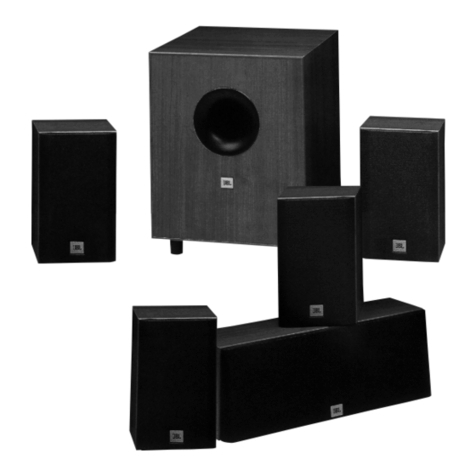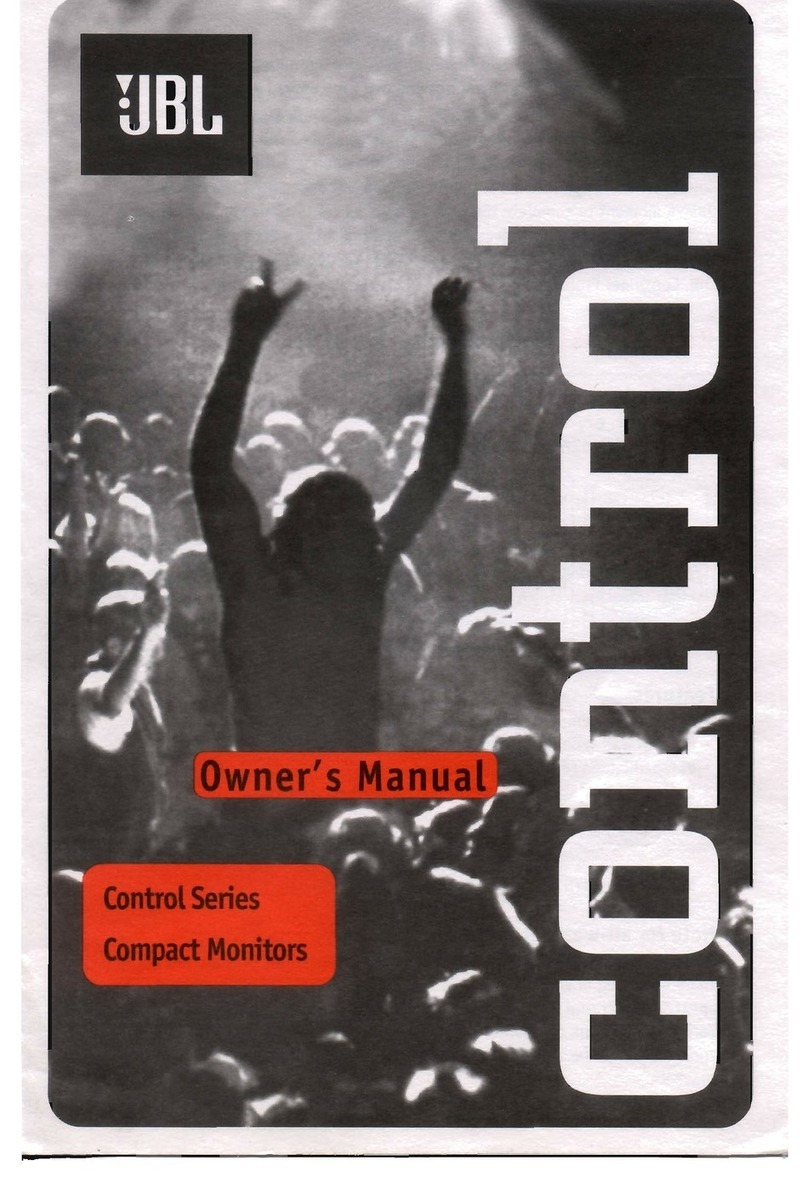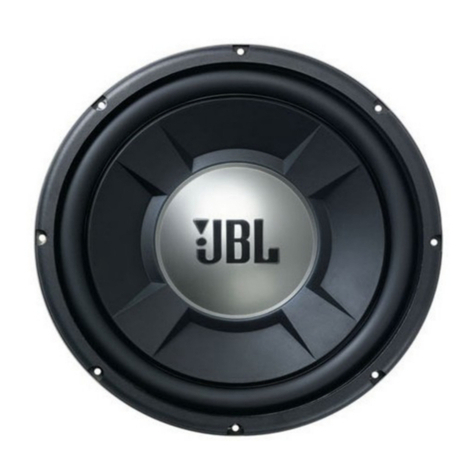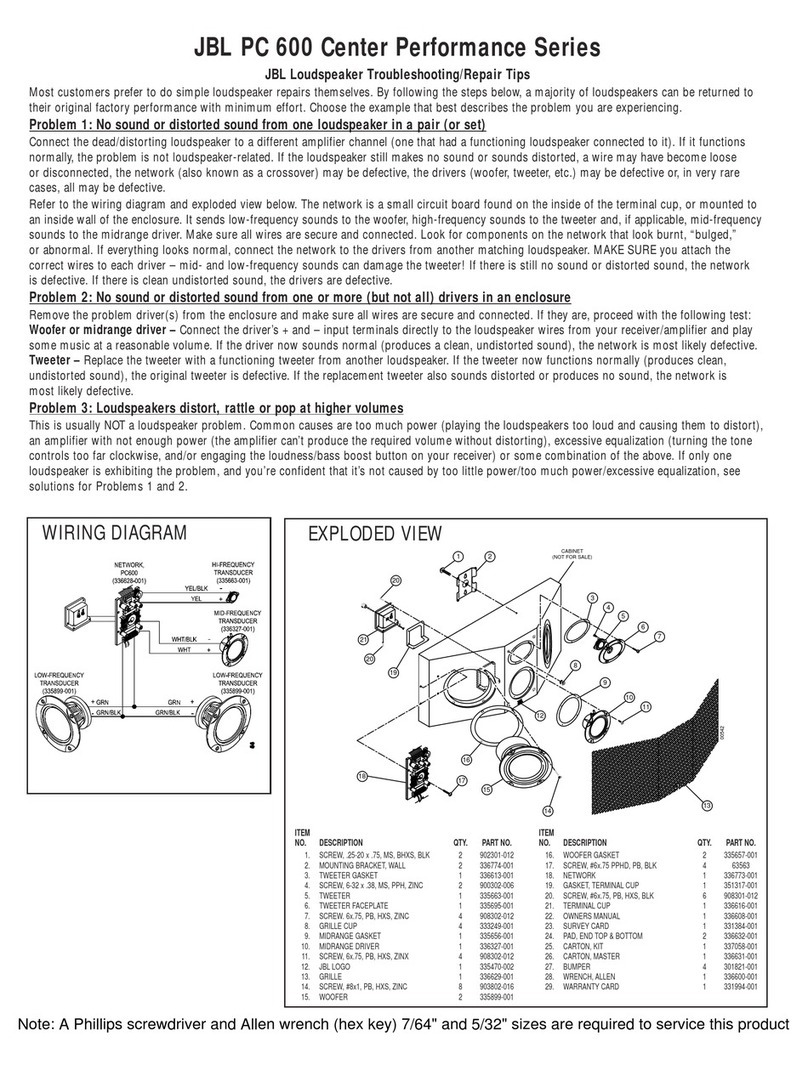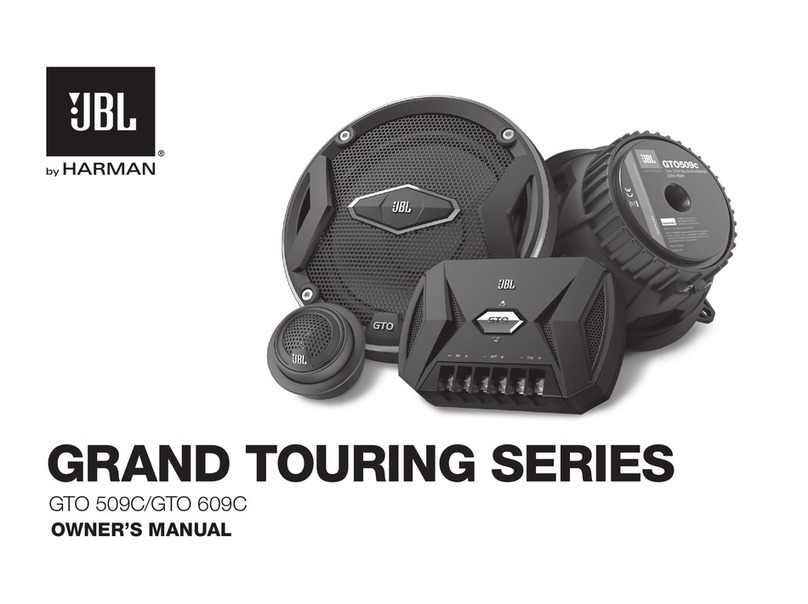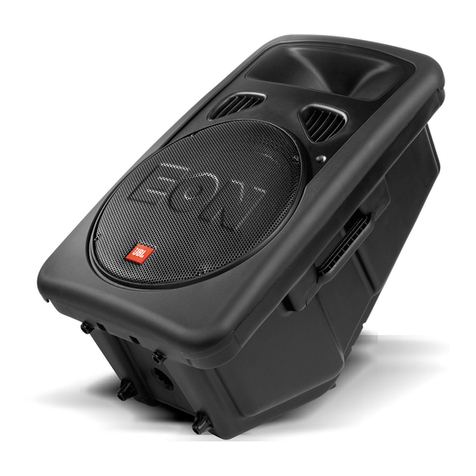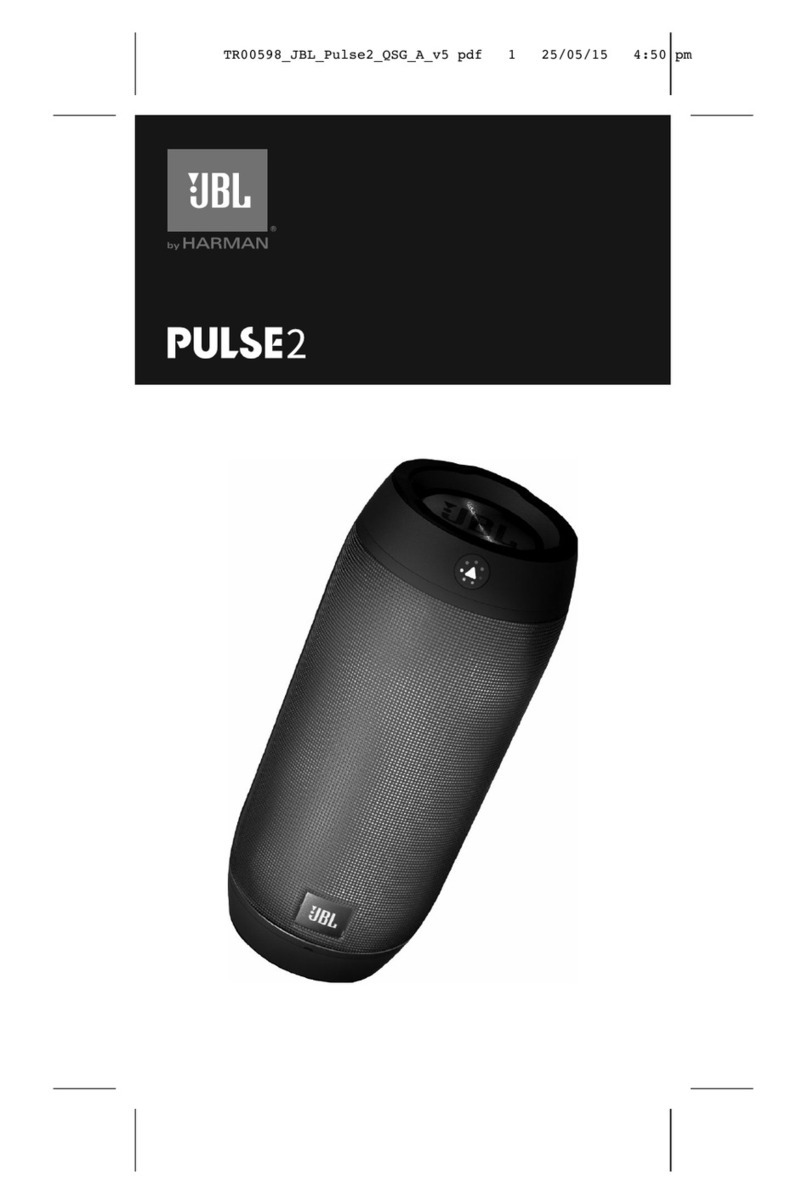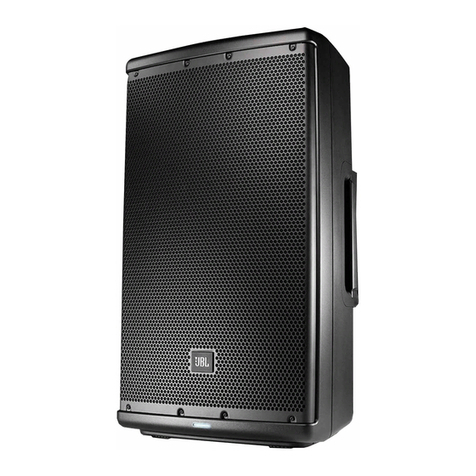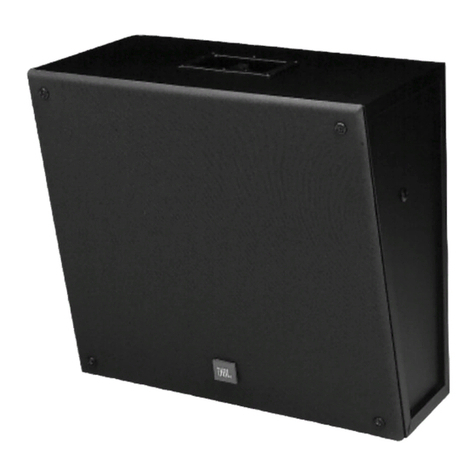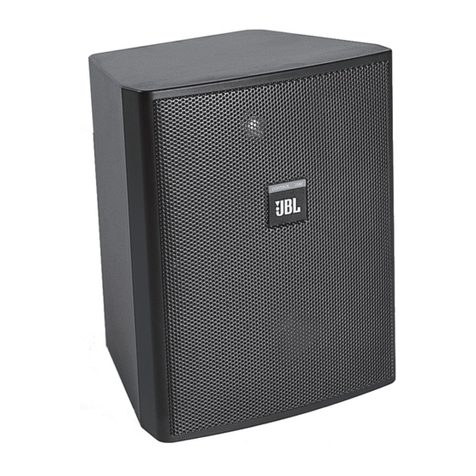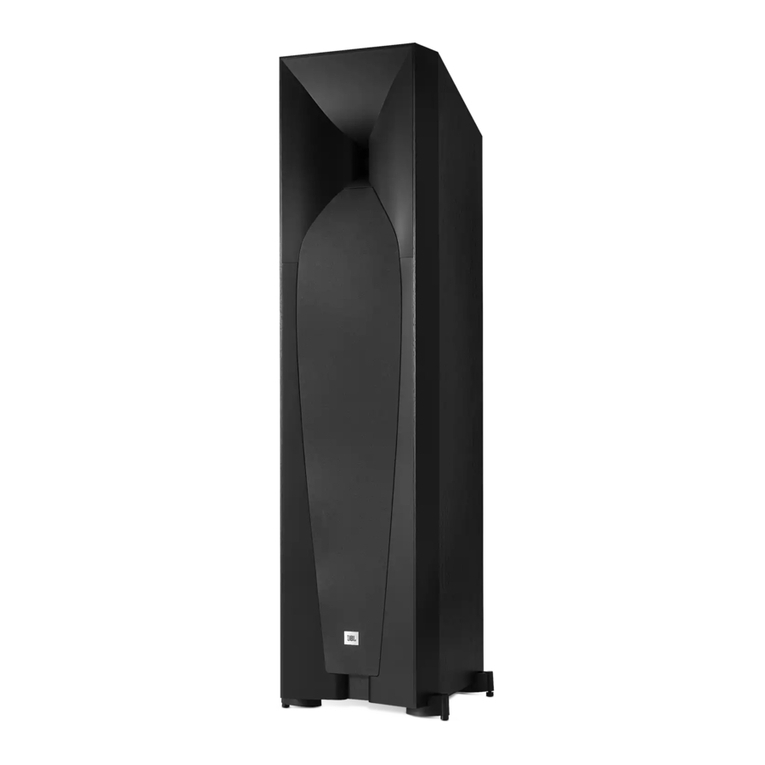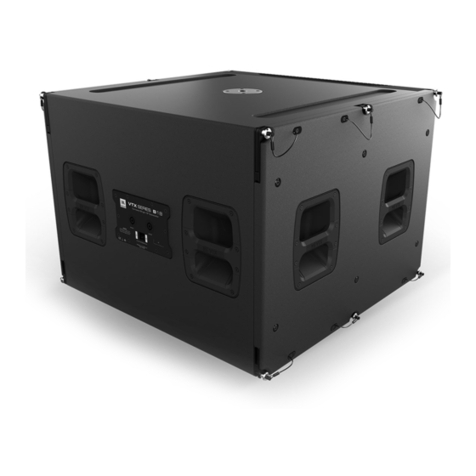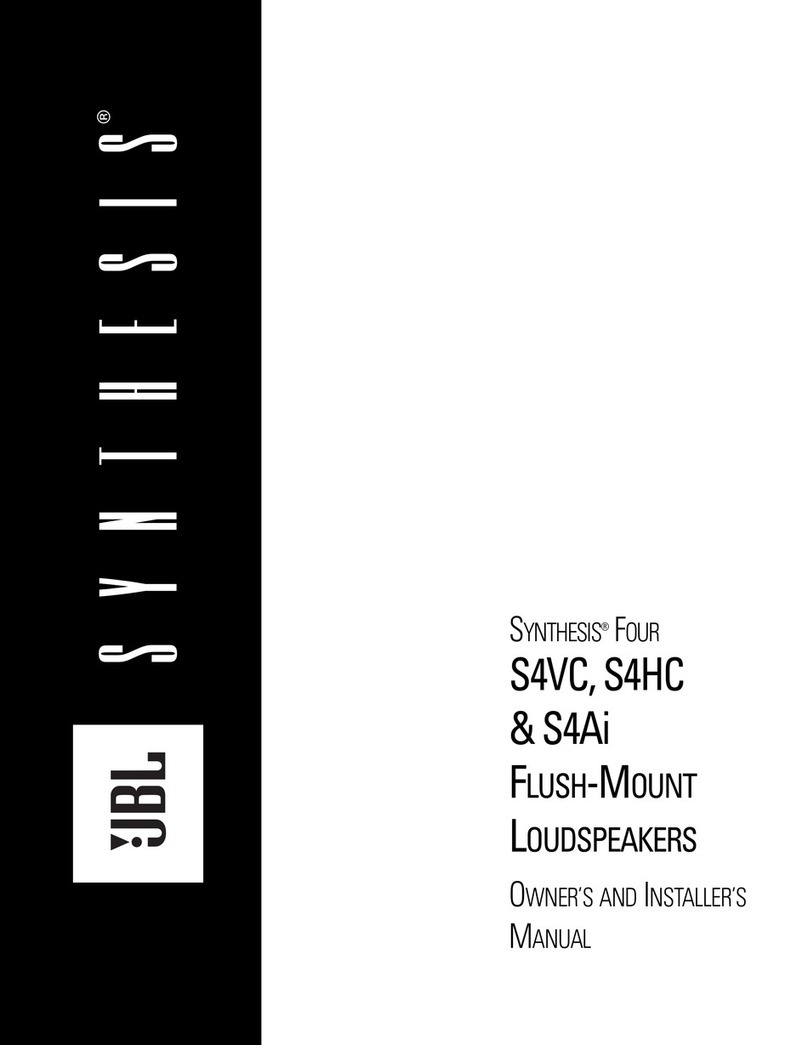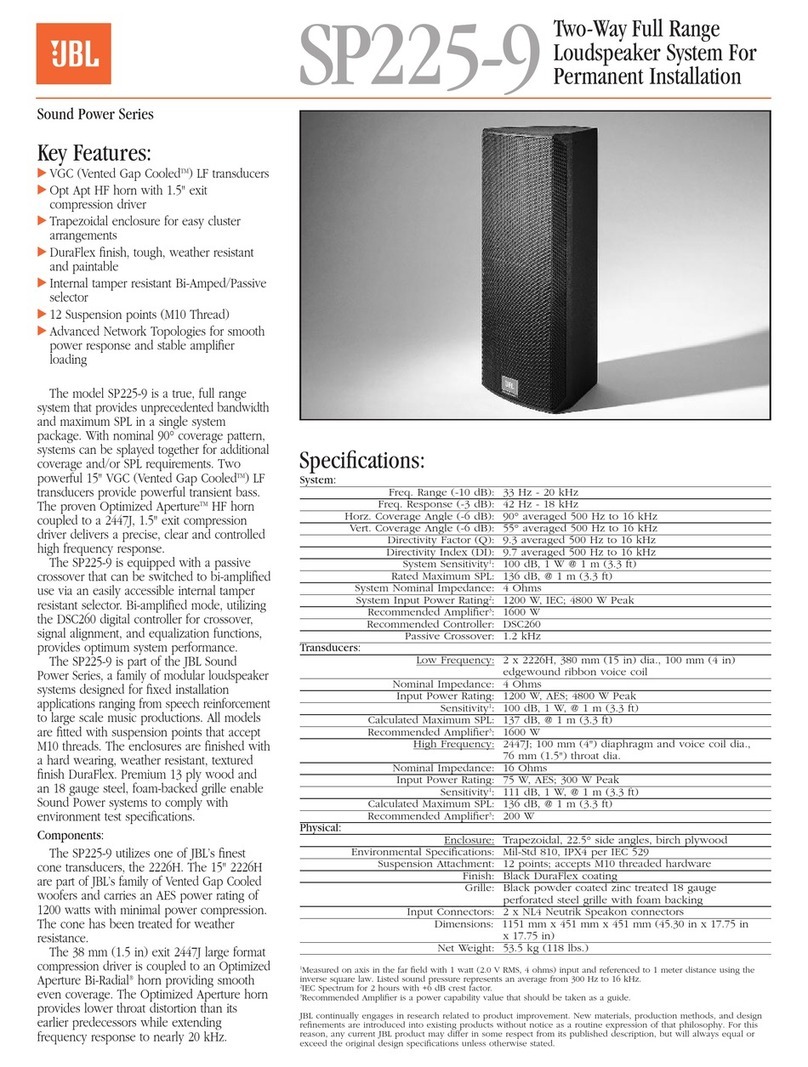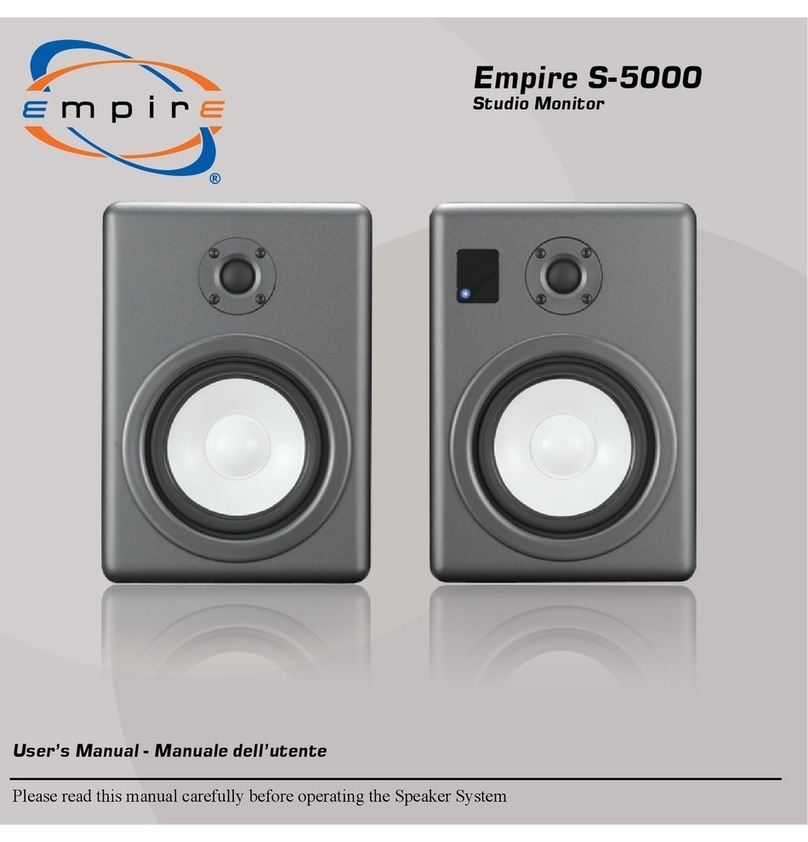²
²
Studio 130, Studio 120c
Studio 190, Studio 180
www.jbl.com
9
ENGLISH
CAUTION: Make sure that all of the system’s electrical components are turned OFF (and preferably
unplugged from their AC outlets) before making any connections.
Speakers and amplifiers have corresponding positive and negative (“+” and “–”) connection terminals. All Studio 1 series
speakers have connection terminals that are marked “+” and “–” on the terminal-cup assembly. Additionally, the “+”
terminals have red markings, while the “–” terminals have black markings.
To ensure proper polarity, connect each “+” terminal on the back of the amplifier or receiver to the respective “+” (red)
terminal on each speaker. Connect the “–” terminals in a similar way. Do not reverse polarities (i.e., “+” to “–” or “–” to “+”)
when making connections. Doing so will cause poor stereo imaging and diminished bass performance.
IMPORTANT: Make sure the (+) and (–) wires or connectors do not touch each other or the other terminal.
Touching wires can cause a short circuit that can damage your receiver or amplifier.
BASIC SINGLEWIRE CONNECTION
Connect the amplifier to each speaker as shown in the illustration below.
For the Studio 190 and Studio 180 speakers, you can use either set of terminals on the connector panel.
IMPORTANT: Do not remove the metal jumpers from between the two sets of terminals when connecting
the speaker wires.
CONNECTIONS
Use Either Set
of Terminals
Do Not Remove
Jumper Strips
Receiver or Amplifier
(One Channel Shown)
Receiver or Amplifier
(One Channel Shown)
Speaker
Connector Panel
Speaker
Connector Panel
